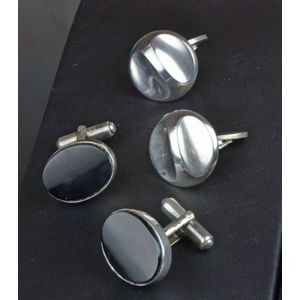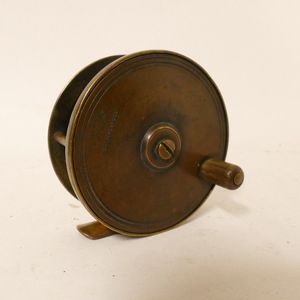Victorian Silver Caddy Spoon with Bright Cut Decoration
You must be a subscriber, and be logged in to view price and dealer details.
Subscribe Now to view actual auction price for this item
When you subscribe, you have the option of setting the currency in which to display prices to $Au, $US, $NZ or Stg.
- Marrow Spoon - A spoon with a long handle and a narrow scoop shaped bowl, used to scoop and eat marrow from the hollow centre of roasted bones. Some marrow scoops are double ended with a different shaped bowl at each end.
- Victorian Period - The Victorian period of furniture and decorative arts design covers the reign of Queen Victoria from 1837 to 1901. There was not one dominant style of furniture in the Victorian period. Designers used and modified many historical styles such as Gothic, Tudor, Elizabethan, English Rococo, Neoclassical and others, although use of some styles, such as English Rococo and Gothic tended to dominate the furniture manufacture of the period.
The Victorian period was preceded by the Regency and William IV periods, and followed by the Edwardian period, named for Edward VII (1841 ? 1910) who was King of the United Kingdom and the British Dominions and Emperor of India for the brief period from 1901 until his death in 1910. - Bright Cut Decoration - Bright cut decoration is a technique used to decorate silver and other metal objects, such as jewellery and flatware, with intricate and detailed patterns. The technique involves using a small, sharp tool called a graver to carve designs into the surface of the metal. These designs are then polished, creating a bright, reflective surface that contrasts with the surrounding metal. The designs can be simple or complex, and can include geometric shapes, scrolling vines, and other decorative elements. The technique is highly skilled and requires a lot of precision, patience and attention to detail.
Bright cut decoration was widely used in the 18th and 19th centuries, particularly in the silverware and jewellery industries. It was popular in the United States, Great Britain and Europe.
Today, bright cut decoration is still used by some craftsmen and artists, but it is considered a traditional technique and is not as widely used as it was in the past. However, the bright cut decoration on a silver object is still considered a sign of quality and craftsmanship and is highly prized by collectors of antique silver and other metal objects.
This item has been included into following indexes:
Visually similar items

George Jensen silver cufflinks and pair French silver and onyx cufflinks i) pair Georg Jensen Denmark sterling silver cufflinks stamped 925S Denmark with dotted circle mark diameter 2 cm ii) pair French silver and onyx cufflinks stamped with French assay m

A pair of 18ct white gold rose quartz and diamond earrings, two round brilliant cut diamonds, 0.20ct in total. Total weight 14.2grams.

George IV sterling silver tea caddy spoon hallmarked Birmingham 1825, 7.5 cm long approx.

A 3 inch x 1 1/4 inch plate wind brass reel for A.W. McCarthy, Dunedin & Invercargill, retailer's name stamped to face plate, used for tench, perch and trout.
